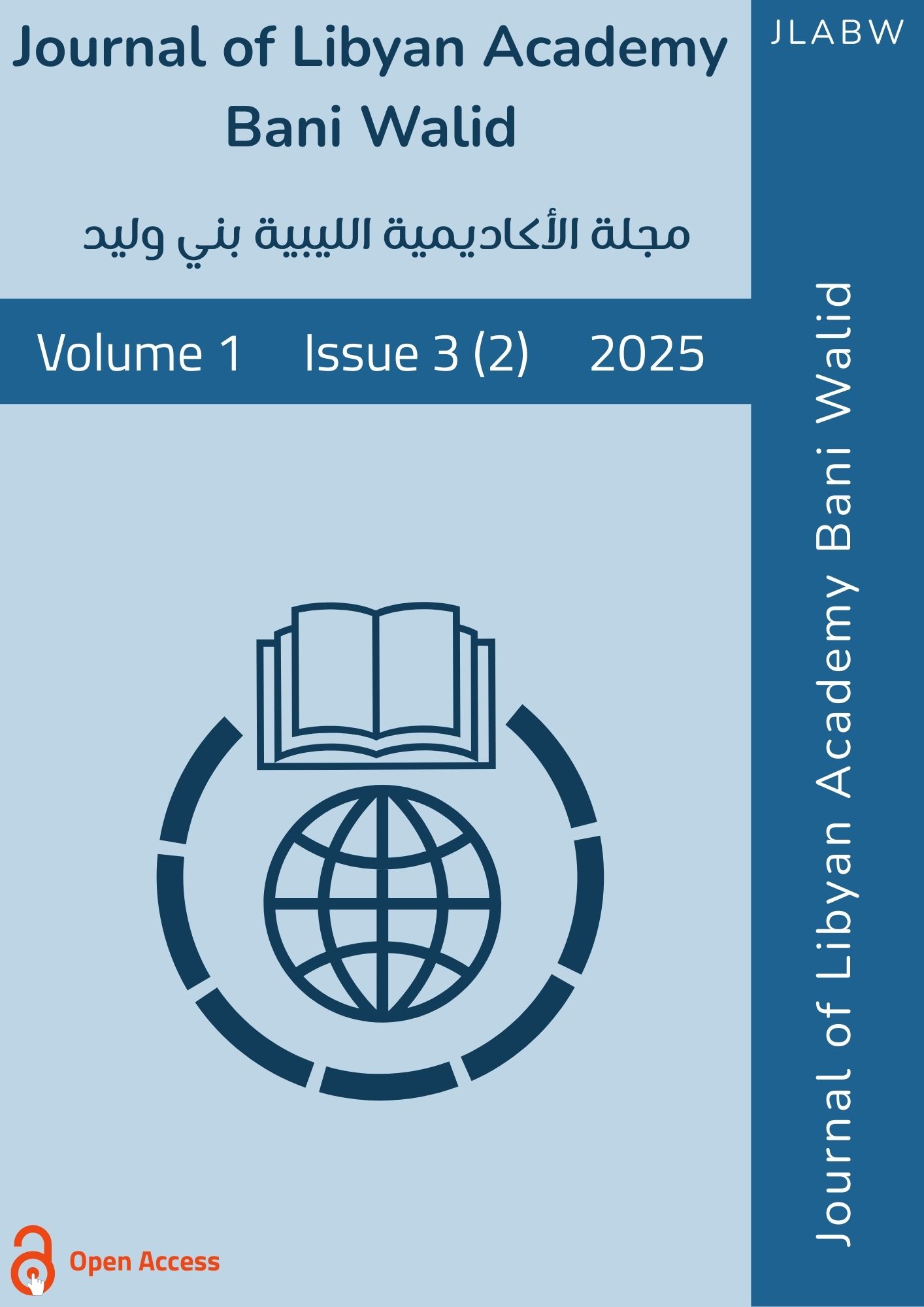دراسة استبيانيه لأفضل خمسة أعشاب طبية
DOI:
https://doi.org/10.61952/jlabw.v1i3.212الكلمات المفتاحية:
أعشاب طبية، التداوي، الحديث، الكيماوي، الامراضالملخص
هدفت هذه الدراسة إلى تحديد أفضل خمس أعشاب طبية واستخداماتها العلاجية. أجريت الدراسة في الفترة ما بين 2 أكتوبر الي 30 ديسمبر 2024. تم اختيار 35 عينة عشوائيًا لتحديد أهمية الأعشاب الطبية واستخداماتها. أظهرت نتائج الدراسة الحالية أن استخدام الأدوية العشبية في علاج الأمراض يمثل 63٪ من الإجمالي، مقارنة باستخدام الطب الحديث بنسبة 40٪. وبالتالي، فإن هذا يوفر أملًا لاستخدام الأعشاب الطبية في العلاج. كما نجد أن المرضى أقل وعيًا بالآثار الجانبية للأدوية الطبيعية مقارنة بآثار الأدوية الكيميائية بنسبة 43٪. كما تؤكد الدراسات أيضًا إمكانية استخدام الأعشاب لعلاج بعض الأمراض بنسبة 38٪، ومدى اهتمام المواطنين الليبيين باستخدام الأعشاب للعلاج بنسبة 54٪، وجدوة العلاج بالأدوية العشبية مقارنة بالطب الحديث بنسبة 60٪. والتعرف على أهمية العلاج بالأعشاب الطبيعية في علاج بعض الأمراض، وبيان الآثار الجانبية القليلة للطب العشبي مقارنة بالآثار الجانبية للطب الكيميائي، والتأكيد على فكرة أن الطب الطبيعي هو أساس الطب الكيميائي، وأن آثاره الجانبية قليلة.
المراجع
Thomas B and Rajendran A. 2013, Less known ethnomedicinal plants used by kurichar tribe of wayanad district, Southern Western Ghats kerala, India. Botany Research International 6.2.
Kavimani S., Divya S., Mahalakshmi G. 2018, Toxicity Studies Related to Medicinal Plants, Natural products and Drug Discovery, pages 401-505.
Ravindra V., Prakash S. 2022, Ginger A Potential Source of Therapeutic and pharmaceutical compounds, journal of Food Bioactives.
Ruchi B. S., Deepak K. S., Sandra C.b., Alvaro M. V. 2015, Gingerols and shogaols: Important nutraceutical principles from ginger, Phytochemistry, Volume 117, Pages 554-568.
Alston J.M and Pardey P.G. 2006, Agricultural productivity. Subchapter in historical statistics of the United states: Earliest times to the present, Millennial edition, Volume 4, part D, Economic sectors.
Kumar N.V., Murthy P.S., Manjunatha J.R., Bettadaiah B.K. 2014,Synthesis and quorum sensing inhibitory activity of key phenolic compounds of ginger and their derivatives. Food Chem. 159:451–457.
Srivastava, J. K., Shankar, E., Gupta, S. (2010). Chamomile: A herbal medicine of the past with a bright future. Molecular medicine reports, 3(6), 895-901
Adams, R.P., 2007. Identification of Essential Oil Components by Gas Chromatography/Mass Spectrometry. 4th ed. , Allured Pub Corp: New York, NY, USA, 823 p., ISBN: 978-1932633214.
Chauhan, E.S.; Aishwarya, J. 2018, Nutraceutical analysis of Marticariarecutita (Chamomile) dried leaves and flower powder and comparison between them. Int. J. Phytomed. 10, 111–114.
Chauhan, R.; Singh, S.; Kumar, V.; Kumar, A.; Kumari, A.; Rathore, S.; Kumar, R.; Singh, S. A, 2021. Comprehensive review on biology, genetic improvement, agro and process technology of German Chamomile (Matricaria chamomilla L.). Plants, 11,29






